Climbing plants are known for their ability to reach new heights, but some take a more twisting, spiraling approach to scale fences, trellises, and walls. These plants don’t simply grow straight up—they spiral, creating stunning, dynamic patterns as they climb.
In this article, we highlight 20 climbing plants that grow in spirals. From honeysuckles and morning glories to climbing vines and creeping jasmine, these plants add a unique, whimsical touch to your garden. If you’re looking to add some twists and turns to your garden design, these spiral-climbers will create a beautiful, mesmerizing effect!
Morning Glory
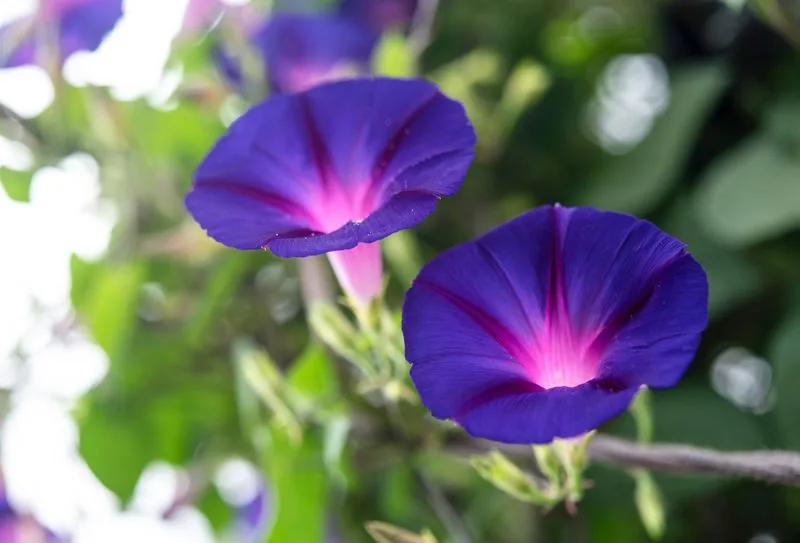
Morning Glory is known for its stunning trumpet-shaped flowers that bloom in vibrant blues and purples. As they climb, they twist elegantly around trellises or fences, creating a living tapestry. With sunlight, their blossoms open, revealing their true beauty. Ideal for adding color to any vertical space, they require minimal care and thrive in sunny spots. Regular watering keeps them happy, but be wary of overwatering. Their rapid growth can quickly cover large areas, making them perfect for creating privacy screens. In cooler climates, they grow as annuals, ensuring each year brings fresh blooms.
Wisteria
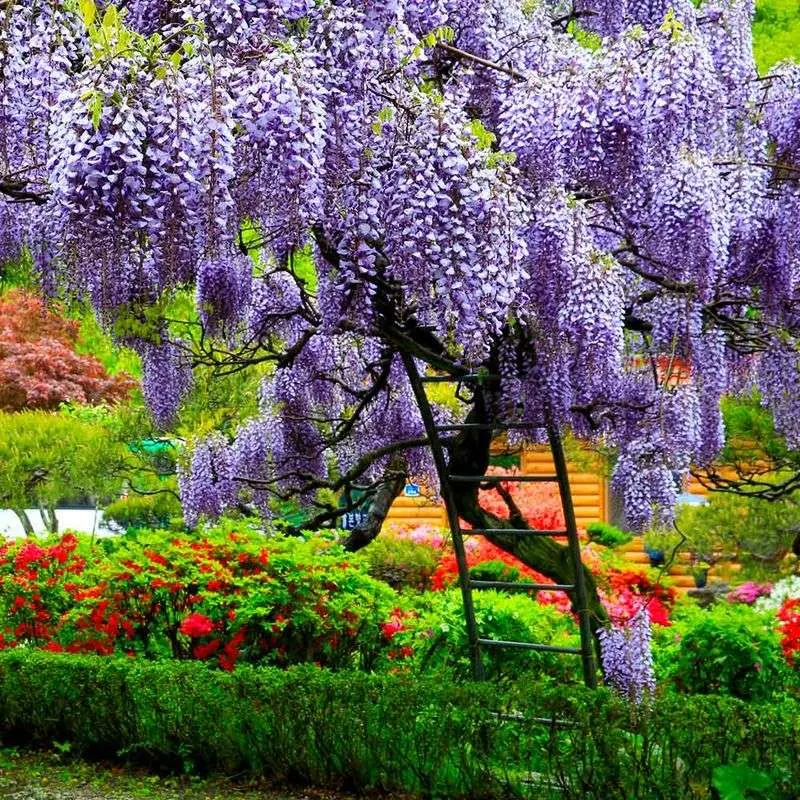
Wisteria captivates with its cascading clusters of flowers that hang like lilac-colored chandeliers. Their spiraling growth around pergolas or trellises adds a touch of elegance to any garden space. These climbers love the sun, soaking up its rays to produce abundant blooms. Regular pruning helps maintain their shape and encourages more flowers. They offer a nostalgic charm reminiscent of classical gardens, creating a serene atmosphere. Although they require patience, as they take a few years to mature, the breathtaking floral display they provide is well worth the wait. Just ensure a sturdy structure supports their weight.
Clematis
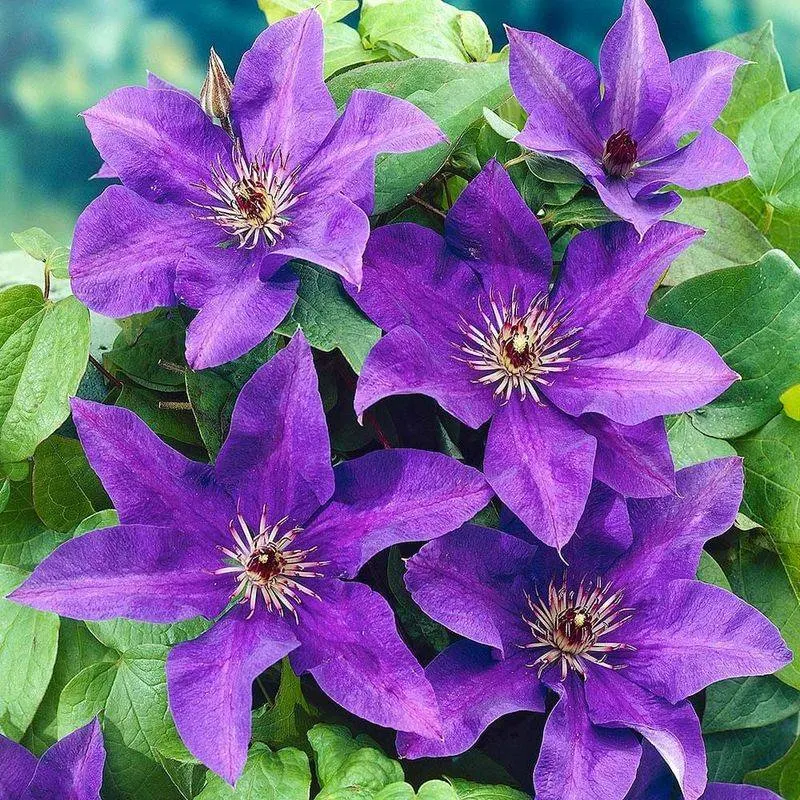
Clematis is a versatile climber known for its diverse range of flower colors and sizes. Its vines spiral around supports, showcasing blooms from soft pastels to deep purples. Perfect for adding a splash of color to any vertical garden, they thrive in well-drained soil. Clematis appreciates a sunny location but prefers its roots to be cool, so consider planting ground cover at its base. Pruning varies by species, so it’s essential to know which type you have. With proper care, clematis transforms structures into vivid floral displays, drawing attention and admiration from all who pass by.
Honeysuckle
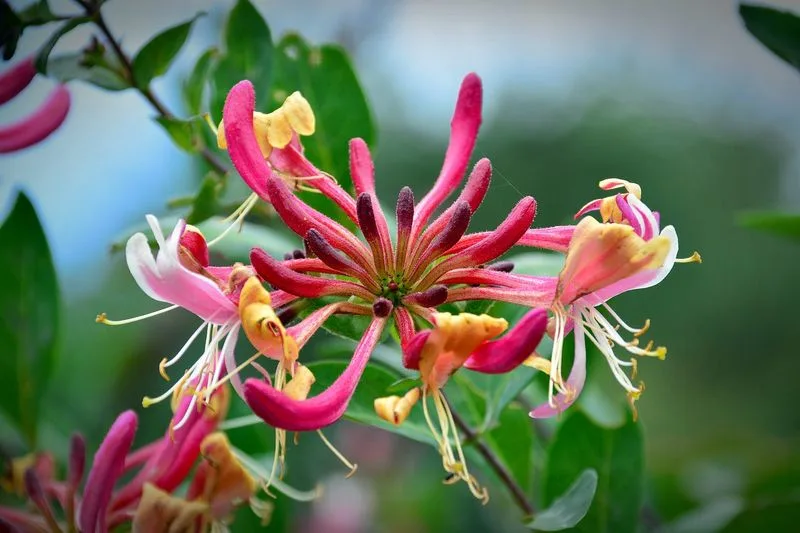
Honeysuckle is celebrated for its sweet fragrance and vibrant tubular flowers. As it climbs, its vines twist around structures, creating a lively and aromatic display. Bees and butterflies are frequent visitors, drawn to its nectar-rich blossoms. Ideal for fences or trellises, it can also be trained over arbors, offering both beauty and scent. While it prefers sunny conditions, it tolerates a variety of soils. Regular pruning keeps it in check and promotes healthy growth. Honeysuckle’s ability to attract pollinators makes it a valuable addition to wildlife-friendly gardens, enhancing biodiversity while dressing up vertical spaces.
Passionflower
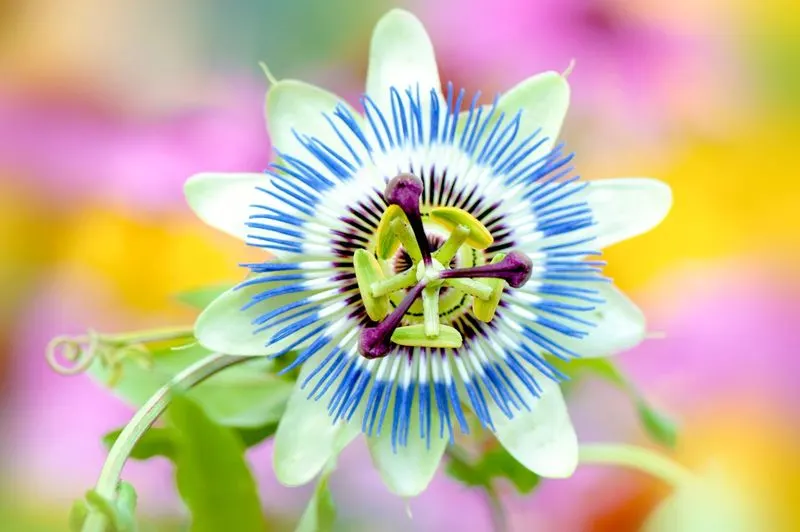
Passionflower stands out with its intricate, exotic-looking flowers that appear almost otherworldly. Its vines twist around supports, creating a captivating display. Passionflowers prefer sunny locations and well-drained soils. These climbers not only add visual interest but also produce edible fruits in some species. Regularly trimming the vines keeps them tidy and encourages more blooms. Their unique appearance makes them a conversation starter, drawing eyes and admiration. Ideal for adding a tropical feel to gardens, passionflowers transform ordinary spaces into exotic retreats, enchanting all who see them. They’re perfect for gardeners seeking something unusual and striking.
Bougainvillea
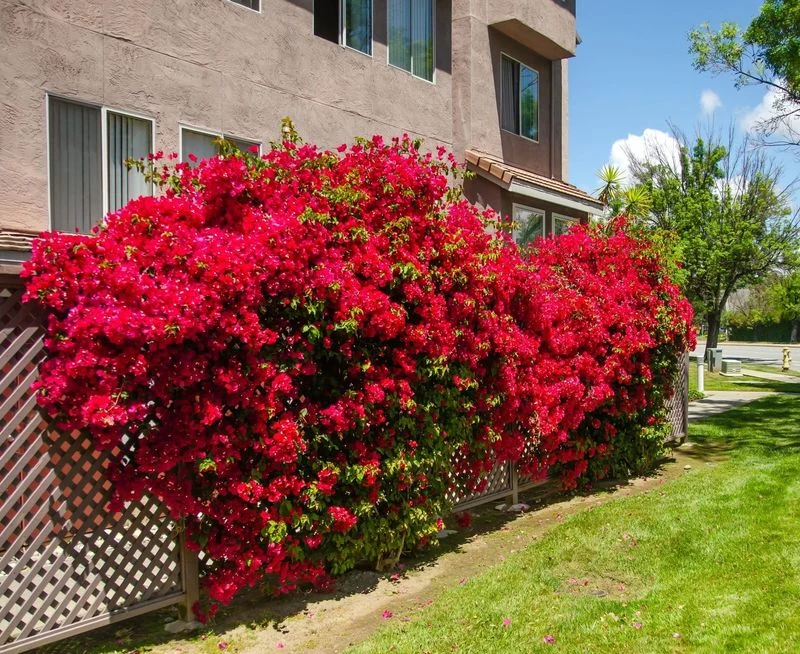
Bougainvillea brightens any space with its vibrant, papery bracts that come in shades of magenta, purple, and orange. As a climber, its thorny stems spiral around supports, creating a bold, colorful display. Given plenty of sun, bougainvillea flourishes, adding a tropical feel to gardens. While it prefers a warm climate, it can be grown in containers and brought indoors in cooler areas. Minimal watering and occasional feeding keep it thriving. Its ability to cascade over walls and trellises makes it a striking addition to any garden, ensuring it’s always a focal point with its dramatic color show.
Sweet Pea
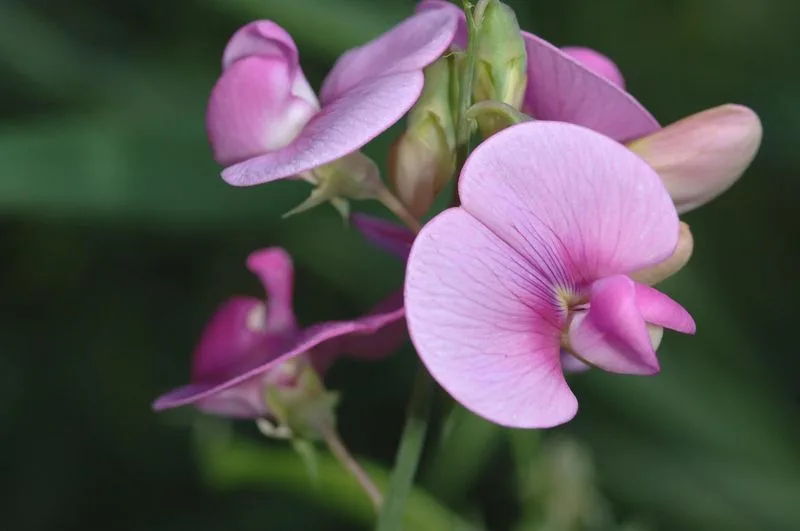
Sweet Pea is cherished for its delightful fragrance and colorful blossoms. Its vines climb by winding around supports, creating a tapestry of pastel-colored flowers. Perfect for trellises and arches, sweet peas thrive in well-drained soil and sunny spots. Regular deadheading encourages continuous blooming, ensuring your garden remains vibrant throughout the growing season. With a history in cottage gardens, they bring a touch of nostalgia and charm. They’re also excellent cut flowers, filling rooms with their sweet scent. Sweet peas not only provide visual delight but also bring aromatic pleasure, enhancing both gardens and interiors.
Jasmine
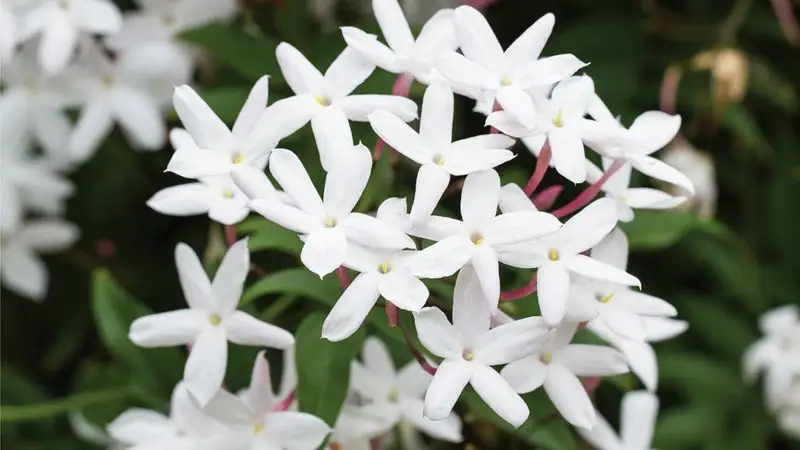
Jasmine enchants with its small, star-shaped flowers that emit a captivating fragrance. As it climbs, its vines elegantly spiral, creating a dreamy, aromatic atmosphere. Ideal for growing over arbors or fences, jasmine thrives in sunny to semi-shaded areas. Regular watering and occasional feeding keep it healthy and blooming. Its scent is strongest in the evening, making it perfect for night gardens or patios. Jasmine’s ability to attract pollinators while providing a soothing aroma makes it a beloved choice among gardeners. Its delicate appearance belies its hardy nature, ensuring it remains a favorite in many landscapes.
Star Jasmine

Star Jasmine is celebrated for its glossy, evergreen leaves and fragrant white flowers. As it climbs, its vines twirl gracefully, creating an elegant display. Thriving in sunny to partly shaded locations, it prefers well-drained soils. Star jasmine is versatile, perfect for covering fences or creating green walls. Its scent is a highlight, filling the air with a sweet fragrance, especially in the evenings. Low maintenance makes it a favorite for busy gardeners. Regular trimming helps maintain its shape and encourages more blooms. Its timeless beauty and aroma make star jasmine a popular choice for enchanting spaces.
Trumpet Vine
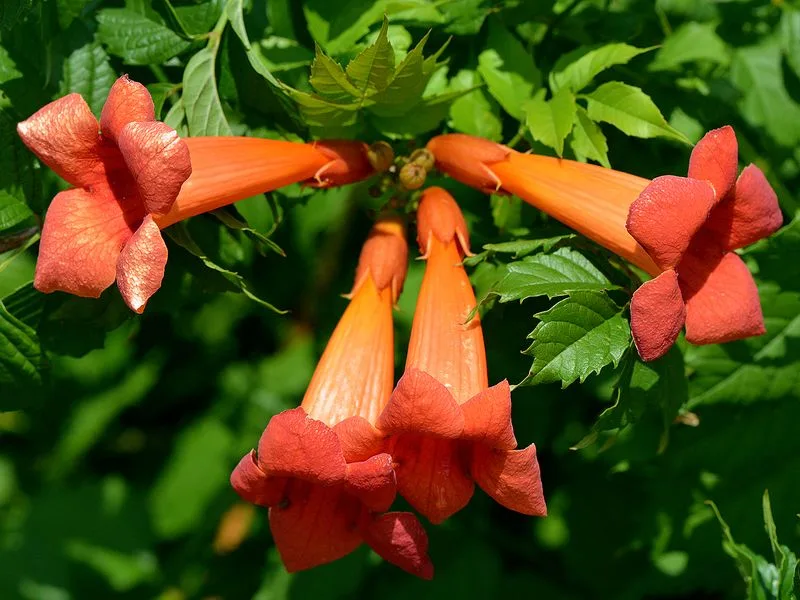
Trumpet Vine is a vigorous climber known for its trumpet-shaped, orange-red flowers. Its vines twist and turn, quickly covering structures with a vibrant display. While it thrives in full sun, it adapts to various soil types. Trumpet vine’s blossoms are magnets for hummingbirds and bees, adding life to gardens. Regular pruning is essential to control its rampant growth, preventing it from overwhelming other plants. Its bold flowers create a striking visual impact, making it a go-to choice for gardeners looking to add drama. Perfect for large spaces, trumpet vine transforms ordinary areas into lively spectacles.
Climbing Hydrangea
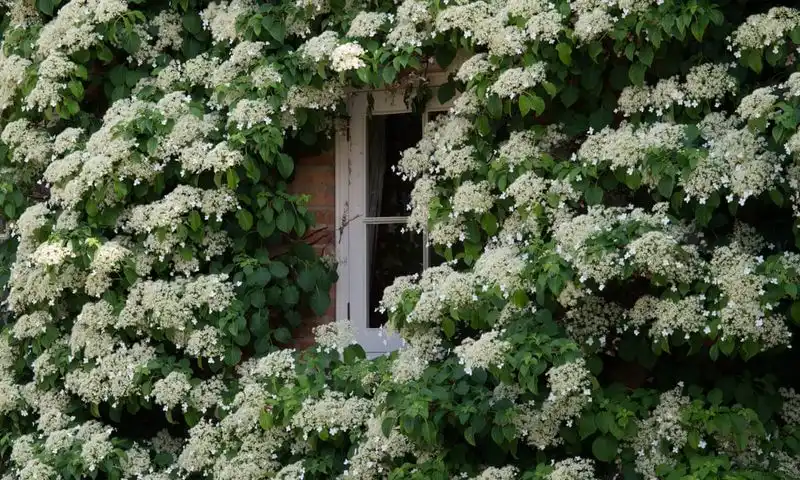
Climbing Hydrangea offers a unique twist on the traditional hydrangea, with its ability to climb vertically. As it ascends, its vines create a lush, green cover adorned with white lacecap flowers. Preferring shaded areas, it’s ideal for north-facing walls. Climbing hydrangeas thrive in rich, well-drained soils and require little maintenance once established. They add a touch of elegance to any surface they embrace, making them perfect for creating soft, natural backdrops. Their slow growth ensures they don’t overwhelm spaces, offering a gentle beauty that complements other garden elements. Ideal for adding texture and interest to vertical gardens.
Akebia
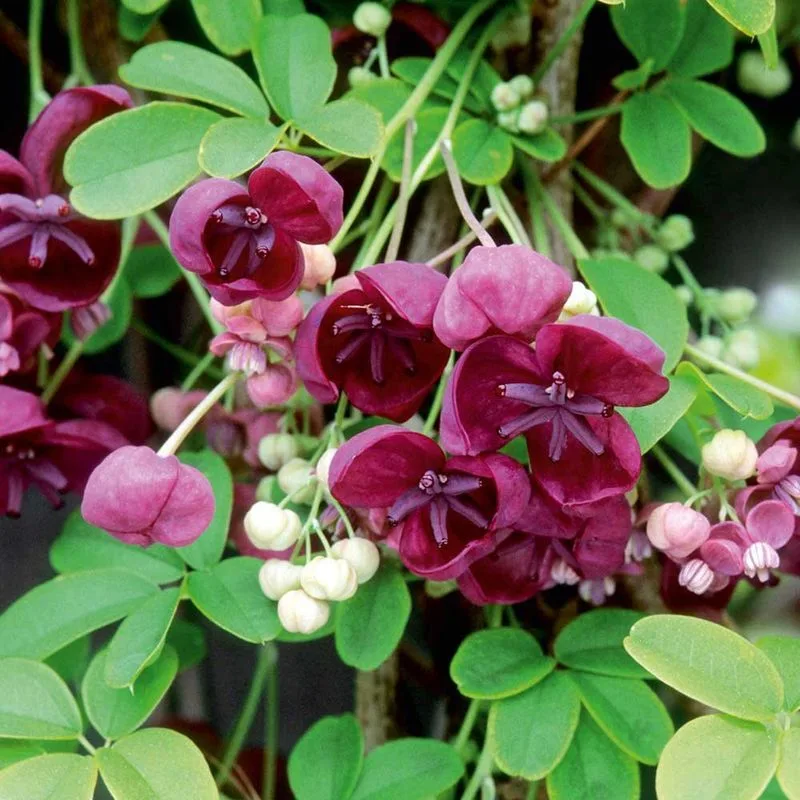
Akebia, also known as chocolate vine, enchants with its fragrant, purple flowers and unique, sausage-shaped pods. Its vines twirl and weave around supports, creating a dense, green canopy. Thriving in both sun and partial shade, akebia is versatile and easy to grow. It prefers well-drained soils, with occasional watering to keep it flourishing. This climber adds an exotic touch to gardens, with flowers that are subtly scented like chocolate. While it’s a vigorous grower, regular pruning keeps it manageable. Akebia is perfect for adding intrigue and fragrance, inviting curiosity and admiration from garden visitors.
Virgin’s Bower
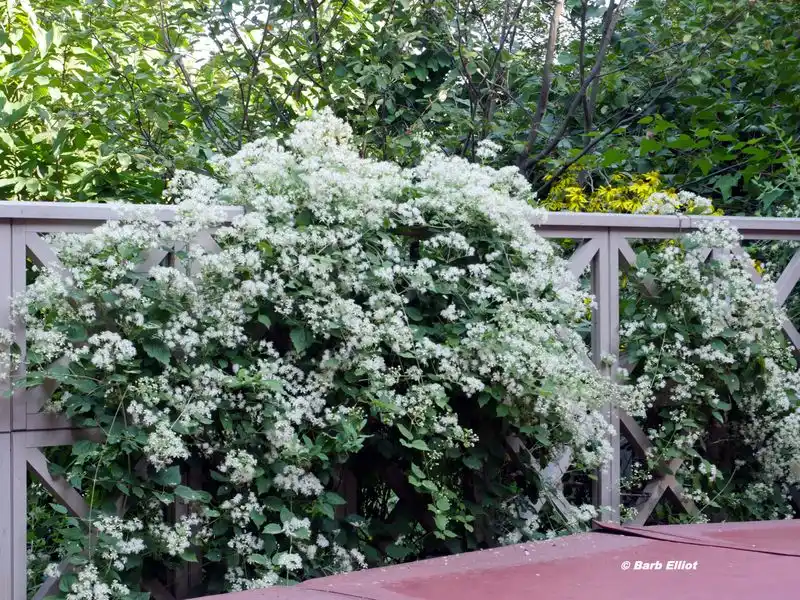
Virgin’s Bower, a member of the clematis family, offers delicate, starry white flowers that bloom profusely. Its vines twist around structures, creating a soft, airy cover. Ideal for trellises or arbors, it thrives in sunny to lightly shaded locations. Virgin’s Bower benefits from well-drained soil and regular watering. Its feathery seed heads add interest long after the flowers have faded, providing visual appeal throughout the seasons. This climber is perfect for adding a touch of whimsy to gardens. With its gentle beauty and easy care, virgin’s bower is a delightful addition to any landscape.
Black-Eyed Susan Vine
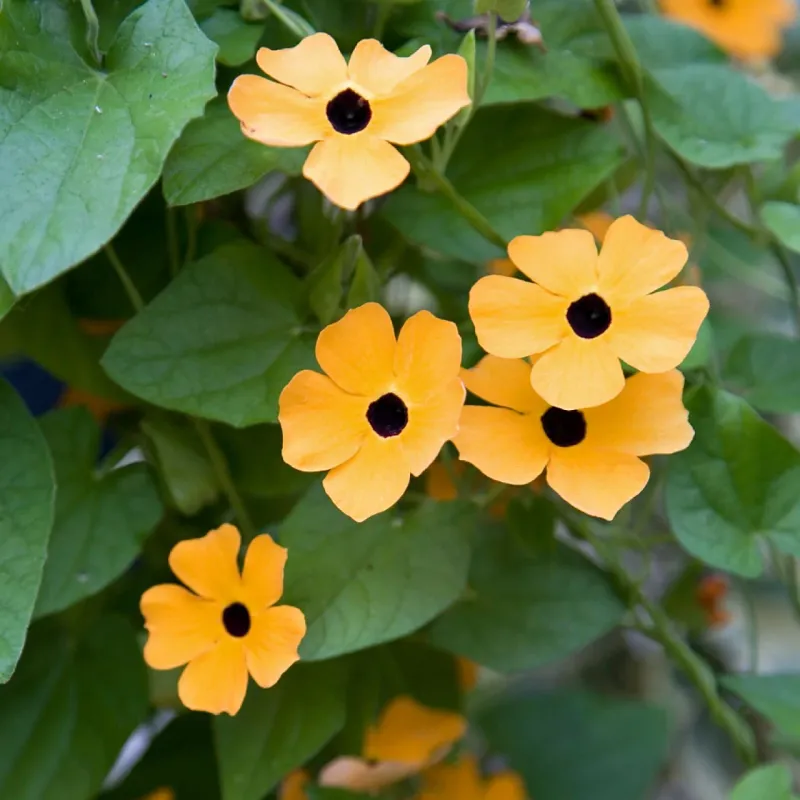
Black-Eyed Susan Vine is a cheerful addition to any garden, with its bright yellow-orange flowers and dark centers. As a climber, its vines wind around supports, quickly covering trellises with a burst of color. This vine prefers sunny locations and rich, well-drained soils. Regular watering and occasional feeding keep it thriving. It’s a fast grower, ideal for adding quick coverage to bare spaces. Black-eyed susan vine’s vibrant blooms attract pollinators, enhancing garden biodiversity. Perfect for creating sunny displays, it brings warmth and energy to gardens, offering a lively contrast to green backdrops.
Porcelain Berry
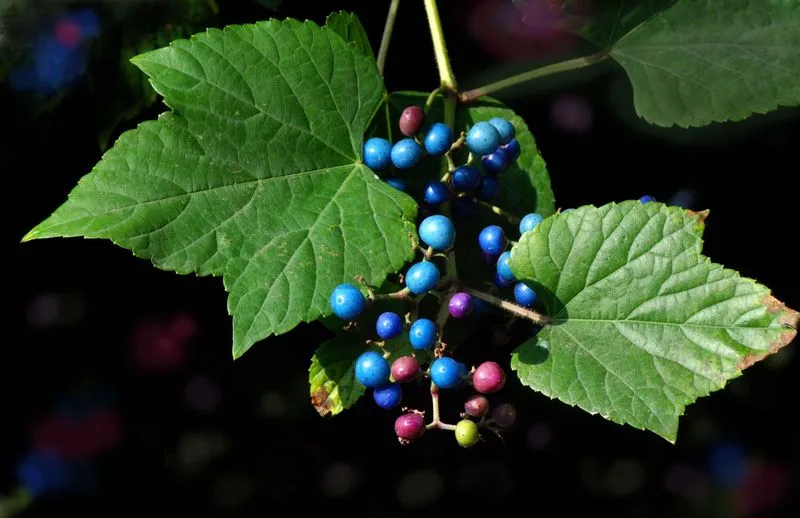
Porcelain Berry is a unique climber, admired for its vibrant berries that range from turquoise to purple. Its vines twist around supports, creating a lively tapestry of foliage and fruit. Thriving in sunny to partially shaded areas, it prefers well-drained soils. While the berries add visual interest, they are not edible for humans. Porcelain berry is ideal for adding color and texture to gardens, with its autumn display being particularly striking. Regular pruning helps manage its growth and encourages a tidy appearance. This vine is perfect for those looking to introduce a touch of the unexpected into their landscapes.
Chilean Potato Vine
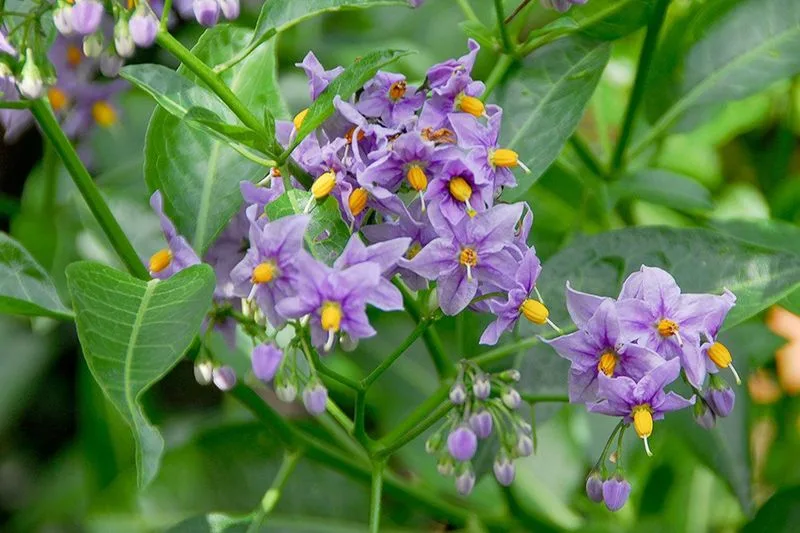
Chilean Potato Vine is a charming addition to gardens, with its star-shaped white flowers and yellow centers. As its vines spiral around structures, they create a graceful, light-filled cover. This climber thrives in sunny positions and well-drained soils. Regular watering and feeding enhance its blooming potential. It’s relatively low-maintenance, making it a favorite for those seeking minimal fuss. Chilean potato vine’s delicate flowers bloom from spring to autumn, offering continuous interest. Its understated beauty and ease of care make it a versatile choice for various garden settings, providing elegance and subtle charm.
Climbing Rose
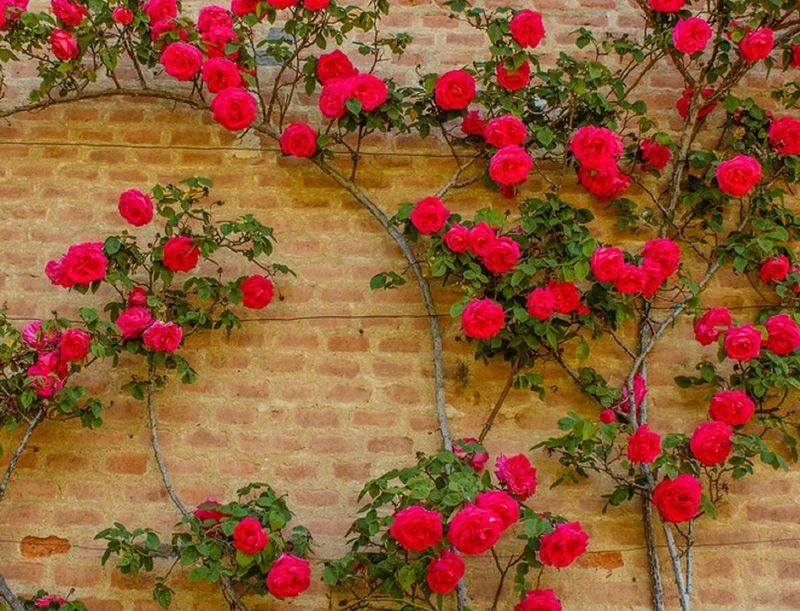
Climbing Roses bring romance and elegance to gardens with their abundant, fragrant blooms. As they ascend, their stems spiral around supports, creating a classic, timeless display. These roses thrive in sunny locations with rich soil and regular watering. Climbing roses add beauty to fences, walls, and arbors, making them ideal for creating romantic settings. Pruning encourages more blooms and maintains their shape. With countless varieties available, there’s a climbing rose to suit every color palette and garden style. Their enchanting presence and sweet scent make them a beloved choice for gardeners seeking classic elegance.
Cypress Vine
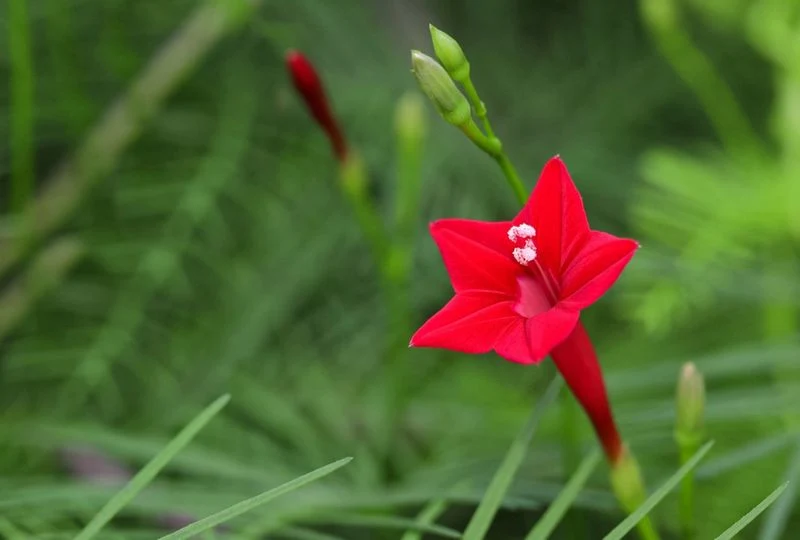
Cypress Vine is a delicate climber known for its feathery foliage and vibrant red flowers. As it winds its way upwards, it creates a soft, airy display. This vine thrives in sunny locations, preferring well-drained soils and regular watering. Cypress vine’s flowers are attractive to hummingbirds, adding life and movement to gardens. Its fast growth makes it perfect for covering bare spaces quickly. Regular pruning keeps it in check and encourages more blooms. Ideal for creating a tropical feel, cypress vine adds a touch of grace and charm, transforming ordinary spaces into vibrant retreats.
Snail Vine
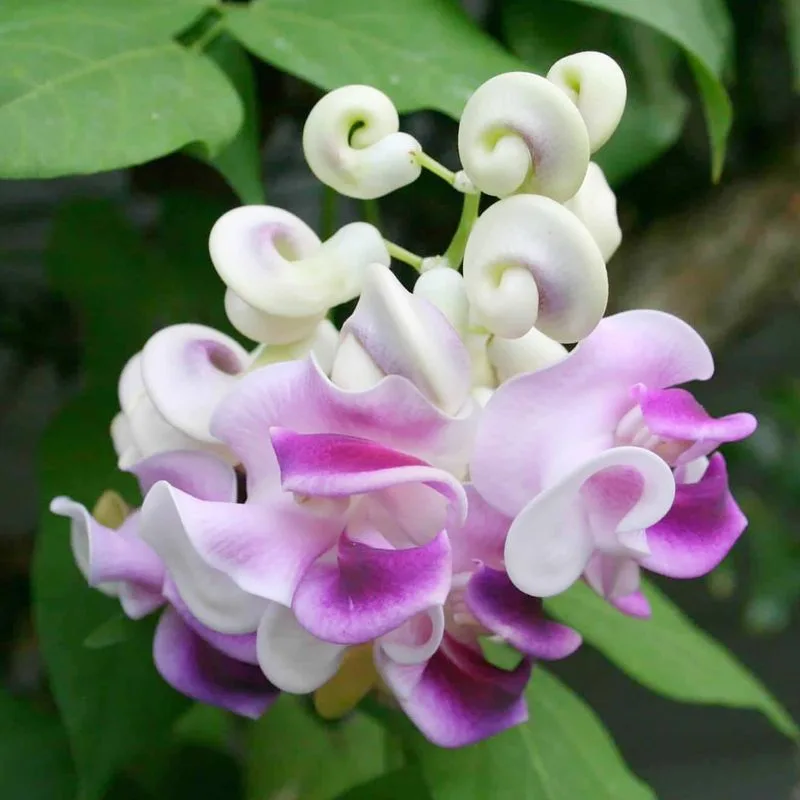
Snail Vine stands out with its unique spiraling flowers that resemble snail shells. As a climber, its vines create an intricate, twisting display. Thriving in sunny locations, it prefers well-drained soils and regular watering. Snail vine’s exotic appearance makes it a conversation starter, adding a touch of the unusual to gardens. It’s perfect for gardeners looking to introduce something different and eye-catching. While it requires a bit of care to thrive, the visual reward is substantial. Snail vine adds whimsy and intrigue, offering a delightful contrast to more traditional garden selections.
Climbing Fig
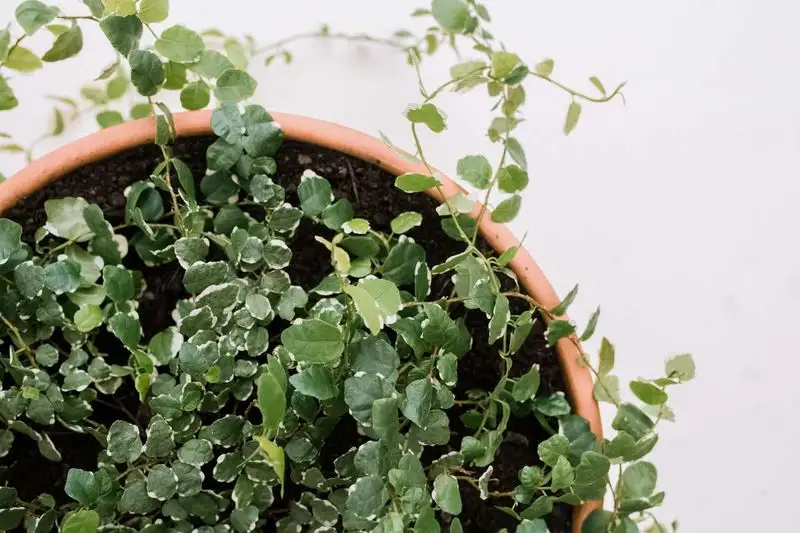
Climbing Fig is a popular choice for covering walls with its dense, green foliage. As it climbs, its vines create a lush, living wall. Ideal for adding texture and depth to vertical spaces, it thrives in shaded to partially sunny locations. Climbing fig requires regular watering, especially in dry periods, and benefits from well-drained soils. Its ability to adhere to surfaces without support makes it versatile and easy to grow. Perfect for creating green backdrops, climbing fig offers a simple yet effective way to enhance garden aesthetics. Its evergreen nature ensures year-round interest and coverage.

